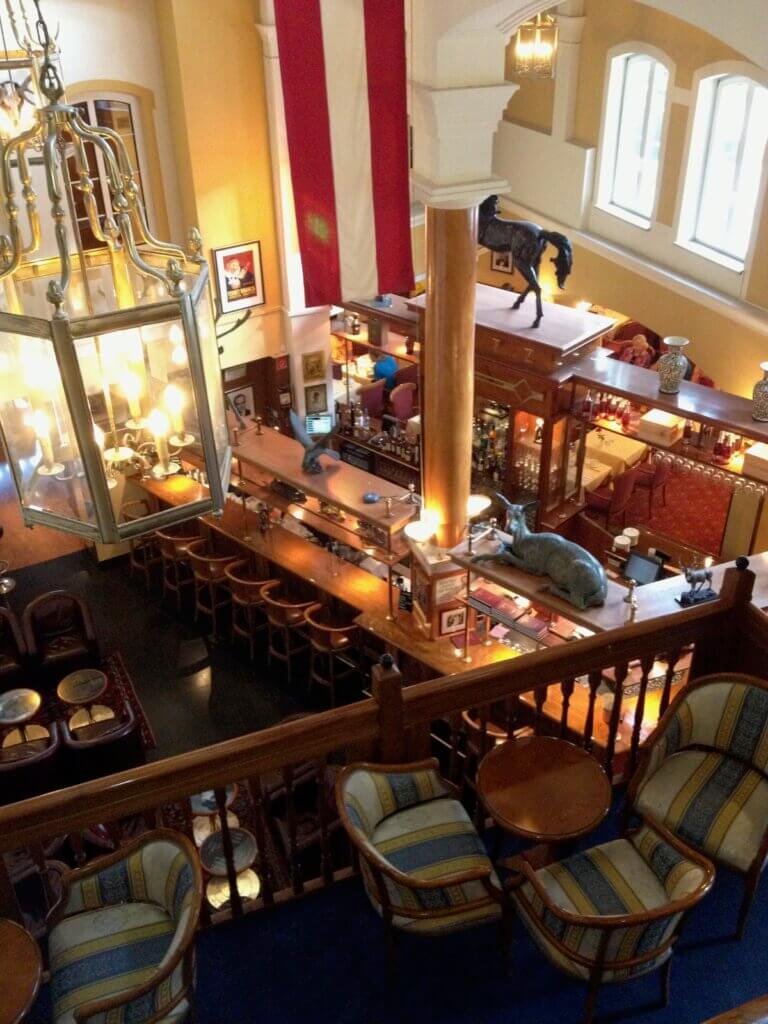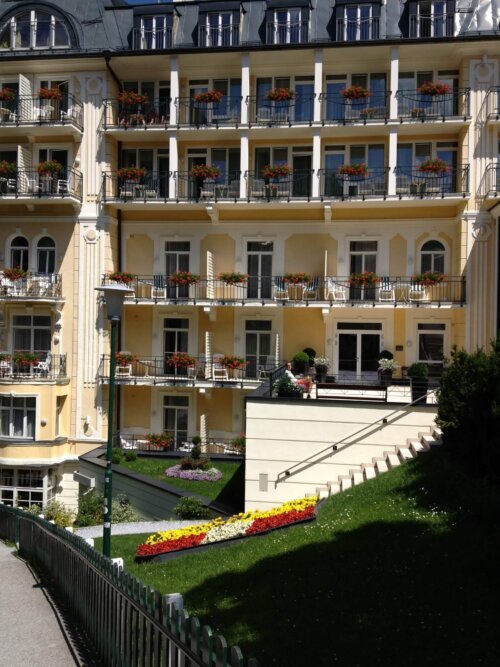I wrote this a long time ago. You can look at Utsidan.se.
Bad Gastein, July 2013: A Hiking Adventure in Austria
Last summer, I had the pleasure of spending a fantastic week hiking in the picturesque town of Bad Gastein, Austria. In this detailed account, I share my experiences, photos, and insights to help inspire fellow adventurers who are considering a similar journey. With a perfect blend of nature, culture, and physical challenge, the trip remains one of my most memorable outdoor adventures.
Planning and Booking
The trip was organized by STS Alpresor.se and took place in late July 2013. I booked my package well before the end of March, which ensured that I received the full board option. This package, priced at approximately 15,000 SEK, was an all-inclusive deal that covered accommodation, three-course dinners accompanied by an impressive buffet at the historic Hotel Salzburger Hof, and lunches served at mountain huts during the day’s hikes. Additionally, the price included the services of a local mountain guide and transportation by bus, with occasional train or taxi rides as needed.

First Impressions and Arrival
Our adventure began on a Saturday morning at 07:30, when we set off on our journey. We arrived at our hotels around midday, leaving us with a leisurely afternoon to explore the surrounding area. The warm summer air—hovering around 25°C—hinted at the challenges and rewards of the week ahead. Despite the heat, everything was perfectly arranged, and the organization of the trip allowed us to focus entirely on enjoying our hiking experience.
Hotel Salzburger Hof: A Blend of Tradition and Comfort
One of the highlights of the trip was our stay at Hotel Salzburger Hof. This charming hotel exudes history and character. Its dining hall, notable for its soaring ceiling of 7–8 meters, creates a sense of grandeur, and the staff’s warm hospitality left a lasting impression. The hotel not only provided exceptional meals but also set the stage for a comfortable retreat after long days on the trails. In contrast, the town below, with its steep and hilly landscape, gave a glimpse into local life with an estimated population of around 3,000 residents. During my exploration, I came across an old cemetery featuring memorials dedicated to young men who lost their lives during World War II. One particularly poignant monument honored an SS non-commissioned officer who perished in Russia before his twentieth birthday. This unexpected historical encounter added a reflective layer to the trip, connecting the present landscape with the weight of its past.

Day 1: Sunday – The Challenge of Angertal
The first full day of hiking began with breakfast at 07:00 AM. Shortly after, between 08:00 and 08:30, we assembled for a briefing. The local mountain guide handed out maps, elevation profiles, and a short outline of the day’s route. Our group, comprising around 15 participants from Sweden and Norway, had an average age of approximately 45. The mix of both men and women, along with varying levels of hiking experience, made for a dynamic and encouraging atmosphere.
I chose the “alpine plus” hiking option, though I was initially unsure about its level of difficulty. Our first challenge came quickly: a steep and rapid section led by the local guide, followed by the Alpresor guide trailing behind. It soon became clear that this rigorous start was designed to gauge our fitness levels. Those who found the pace too demanding could switch to a less challenging alpine group, which was divided into three different difficulty levels. Once the initial test was complete, the pace moderated, allowing us to truly appreciate the breathtaking natural surroundings. The first day ended at a mountain hut where we enjoyed a well-earned lunch before returning to the hotel.
Day 2: Monday – To Niedersachsenhaus
Monday’s hike took us toward the Niedersachsenhaus hut. The morning was bright and clear, with perfect weather for hiking. However, as the day progressed, a brief shower added an element of unpredictability. Our route followed a ridge that provided expansive views of the valley below. The final stretch of the trail involved ascending the crest of the mountain, where the changing weather kept us alert.
At the hut, lunch was a welcome respite. After refueling, we began our descent along the opposite side of the ridge. During the journey back, some members of the group lingered to enjoy a coffee, while others indulged in a small glass of the hut’s own Kottsnaps—a local digestif that added a touch of cultural flavor to the experience. The ease with which the group adjusted to both the physical challenge and the occasional change in weather highlighted the well-organized nature of the trip.
Day 3: Tuesday – Reaching Gamskarkogel
Tuesday was dedicated to hiking toward Gamskarkogel. This day presented slightly less favorable weather conditions, including a light drizzle that gradually gave way to fog and even a few snow flurries at the summit. Despite the chilly conditions on the top, everyone was prepared with extra clothing and rain gear. The trail was notably challenging, with a long section that involved hiking against strong winds at a brisk pace. The exertion, however, was richly rewarded by panoramic views of the rugged landscape from every angle.
Upon reaching the summit, we found a mountain hut known as the Toppstugan on Gamskarkogel. According to local lore, this peak is considered Europe’s highest grass-covered summit—a fascinating fact that added a sense of achievement to our efforts. After a brief but warming rest, which included a change into dry clothes, we began our descent. The experience on Gamskarkogel not only tested our physical limits but also provided a deep sense of connection with the Alpine environment.
Day 4: Wednesday – A Restful Day with an Optional Escape
Wednesday was marked by an optional excursion for those interested in exploring further. An opportunity to visit Venice was offered, and while some of my fellow travelers took the chance, I opted for a day of rest. Choosing to conserve my energy, I relaxed at the hotel and enjoyed the comforts of a leisurely day indoors. Those who ventured to Venice reported that the temperatures soared to around 40°C. They returned in the evening, having experienced the vibrant atmosphere of the Italian city, but I found that sometimes, rest is just as valuable as adventure.
Day 5: Thursday – The Trail to Biberalm
Thursday’s hike was set against a backdrop of splendid weather and captivating natural beauty. After a morning briefing similar to previous days, we set off for our destination—the Biberalm hut. The trail was demanding yet exhilarating, offering a continuous display of Alpine splendor. As we ascended, the landscape shifted between rugged rock formations and gentle, sweeping vistas. The path meandered along narrow ridges at times, creating moments where one could experience a profound sense of openness and freedom.
At Biberalm, a welcome break awaited us. Here, we enjoyed a well-deserved pause that allowed us to regain our strength. The hiking poles, which had been indispensable on the steep descents, proved their worth once again. Along the way, we even spotted edelweiss—a modest but iconic flower of the Alpine region—adding a charming detail to our journey. With renewed energy, we prepared for the final leg of the day’s adventure.
Day 5: Thursday – The Trail to Biberalm
Thursday’s hike was set against a backdrop of splendid weather and captivating natural beauty. After a morning briefing similar to previous days, we set off for our destination—the Biberalm hut. The trail was demanding yet exhilarating, offering a continuous display of Alpine splendor. As we ascended, the landscape shifted between rugged rock formations and gentle, sweeping vistas. The path meandered along narrow ridges at times, creating moments where one could experience a profound sense of openness and freedom.
At Biberalm, a welcome break awaited us. Here, we enjoyed a well-deserved pause that allowed us to regain our strength. The hiking poles, which had been indispensable on the steep descents, proved their worth once again. Along the way, we even spotted edelweiss—a modest but iconic flower of the Alpine region—adding a charming detail to our journey. With renewed energy, we prepared for the final leg of the day’s adventure.
Day 6: Friday – The Final Challenge at Hagener
Friday was arguably the warmest day of the week, with temperatures reaching around 30°C on the mountainside. The heat was palpable, and I vividly recall consuming nearly two liters of water before midday to stay hydrated. The route to the Hagener hut was both challenging and scenic. Our path took us through areas where patches of snow were still visible, even at altitudes above 2000 meters—a reminder of the enduring presence of winter in the high mountains.
At Hagener, we were rewarded with a spectacular view. The hut, perched in an elevated position, provided panoramic vistas that encompassed both the rugged terrain and the delicate alpine flora. It was also during this part of the journey that we encountered some inquisitive mountain goats, whose curious glances added a playful note to our expedition. The descent back to the hotel was relaxed yet filled with the satisfaction of having completed one of the most invigorating hikes of the week.
Final Reflections and Tips for Future Hikers
Reflecting on the entire experience, I can confidently say that the trip was an outstanding adventure, well worth every krona of the 15,000 SEK package. The carefully organized itinerary, the balance between challenge and enjoyment, and the exceptional service provided by both the local mountain guide and the STS Alpresor guide all contributed to a memorable journey. The Hotel Salzburger Hof, with its historical charm, excellent cuisine, and warm hospitality, was the perfect complement to our days on the trail.
Each day, our hikes typically started around 08:30 and concluded between 15:30 and 16:00. Over the course of the week, we covered roughly 10 kilometers daily, gaining approximately 700 to 800 meters in elevation during each excursion. The day’s efforts were often celebrated with an “after walk” gathering over a refreshing beer, making the experience as much about camaraderie as it was about physical achievement.
In terms of preparation, I would advise fellow hikers—especially those over 50—to incorporate regular walking or hiking into their routine. Personally, I walked four to five times per week during most of the spring and dedicated the final three to four weeks before the trip to specifically training on steep inclines. This preparation was key to comfortably handling the “alpine plus” variant of the hikes.
In conclusion, I rate this trip a solid “5 out of 5 Tyrolean Hats” and would not hesitate to embark on a similar adventure in the future. The blend of nature, physical challenge, history, and culture made for an unforgettable experience. Should anyone have questions or require further details, I am more than happy to share my insights and advice.
I hope this detailed narrative inspires others to explore the wonders of the Alps and consider an adventure of their own


